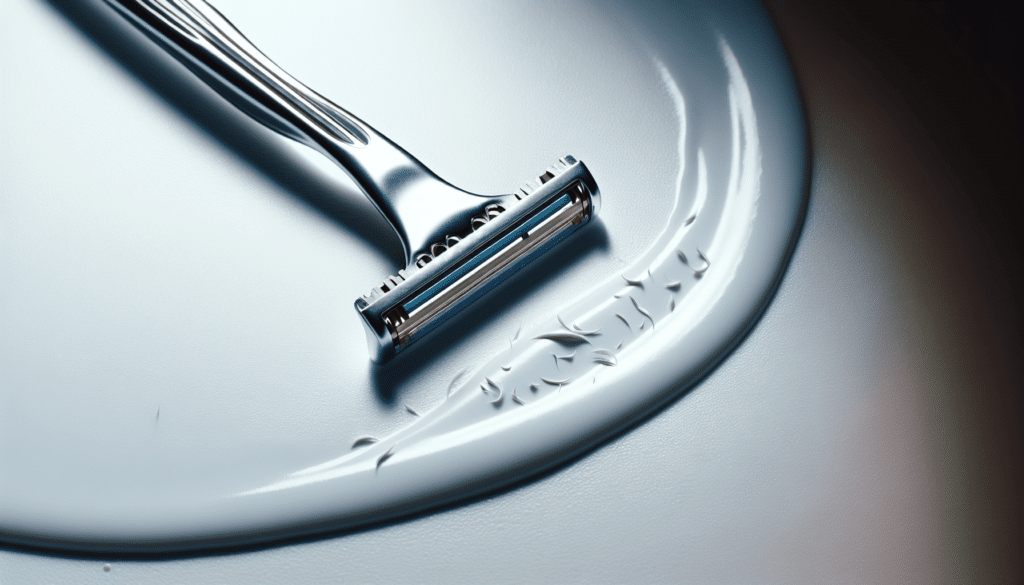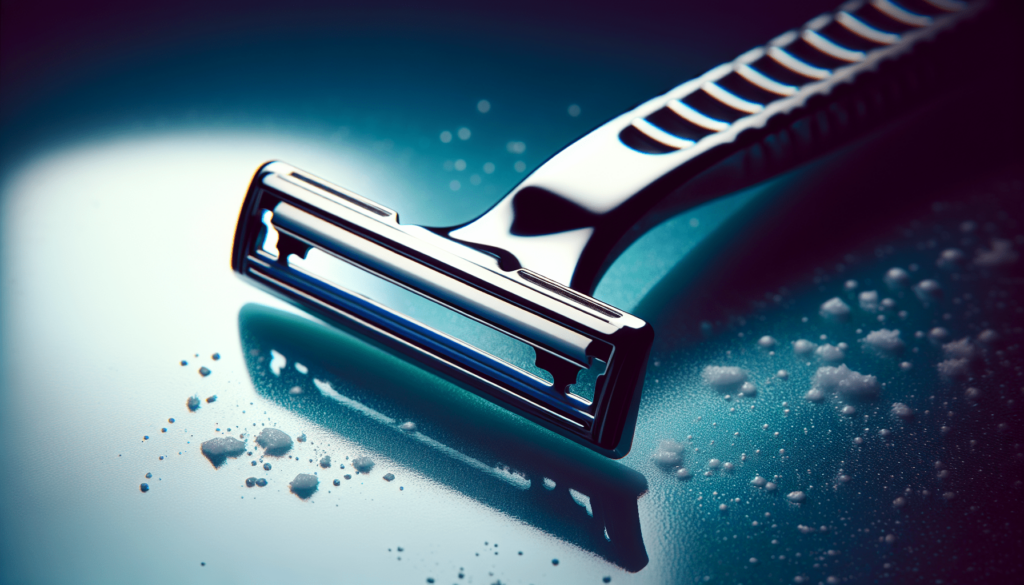If you’re a regular at Hot Wax, the popular local waxing business with two convenient locations in Maryland, you may have found yourself wondering: is it okay to shave between waxing sessions? While waxing is a fantastic way to achieve long-lasting hair removal, life happens, and sometimes you may need a quick touch-up between appointments. In this article, we’ll explore whether shaving is a suitable alternative, providing you with all the information you need to make an informed decision. So, let’s get down to the nitty-gritty and find out if it’s smooth sailing or best to steer clear of the razor in between waxing sessions.

Overview of waxing
Waxing is a popular hair removal method that involves applying hot or cold wax to the skin and then removing it along with the unwanted hair. This process has been practiced for centuries and is known for providing longer-lasting results compared to shaving. Waxing is commonly done on areas such as the legs, bikini line, underarms, and face, and can leave the skin feeling smooth and hair-free for several weeks.
Explanation of waxing process
The waxing process begins with the application of warm or cold wax to the desired area. The wax is then spread evenly over the skin and a cloth or paper strip is pressed onto the wax. Once the wax hardens, the strip is quickly pulled off, removing both the wax and the hair from the root. This method ensures that the hair takes longer to grow back compared to shaving, as it has to regenerate from the root.
Benefits of waxing
One of the main benefits of waxing is the long-lasting results it provides. Unlike shaving, which only removes hair at the surface, waxing pulls the hair out from the root, resulting in smoother skin for a longer period of time. Additionally, regular waxing can lead to a decrease in hair density over time, making the hair grow back thinner and finer.
Another advantage of waxing is that it helps exfoliate the skin. As the wax is removed, dead skin cells are also lifted away, leaving the skin looking fresh and rejuvenated. This can be especially beneficial for individuals with dry or rough skin, as it helps to promote a smoother texture.
How long waxing results typically last
The duration of waxing results can vary from person to person, depending on factors such as hair growth rate and individual skin type. On average, waxing can provide hair-free skin for approximately four to six weeks. However, it’s important to note that the regrowth of hair will become more noticeable and longer over time compared to the initial session. Regular waxing treatments are recommended to maintain smooth and hair-free skin.
Reasons for shaving between waxing sessions
While waxing offers numerous benefits, there may be instances where shaving between waxing sessions becomes necessary. Here are a few reasons why individuals might choose to shave:
Emergencies or last-minute events
Life is unpredictable, and sometimes unexpected events or special occasions arise that require quick hair removal. In these situations, shaving can provide a convenient and immediate solution.
Preference for smooth skin at all times
Some individuals simply prefer the feeling of smooth skin and may want to maintain this sensation in between waxing appointments. Shaving can help achieve that desired smoothness between waxing sessions.
Hair regrowth timeline
Although waxing significantly slows down hair regrowth compared to shaving, there may still be instances where a touch-up is needed. If you notice new hair growth before your next waxing appointment and it bothers you, shaving can help keep the area hair-free until your next waxing session.
Ease of shaving
Shaving is a quick and easy hair removal method that requires minimal equipment and can be done in the comfort of your own home. In some cases, the convenience and simplicity of shaving make it a preferable option for certain individuals.

Impact on waxing results
While shaving between waxing sessions may seem like a practical solution, it can have implications on the overall effectiveness of future waxing sessions. Here are a few considerations to keep in mind:
Effect on hair regrowth
Shaving cuts the hair at the surface level, leaving a blunt edge as it grows back. This can make the regrowth appear thicker and more noticeable compared to the tapered regrowth that occurs after waxing. In the long run, frequent shaving can affect the overall texture of the hair and make it coarser.
Reduced effectiveness of future waxing sessions
Frequent shaving can disrupt the natural hair growth cycle, making it difficult for waxing to be as effective as it would be otherwise. This is because waxing works best when the hair is in the early growth stage, known as the anagen phase. Consistently shaving can cause the hair to enter different growth stages, resulting in less successful waxing sessions.
Potential for ingrown hairs
Shaving can increase the chances of developing ingrown hairs, especially if done improperly or without adequate exfoliation. Ingrown hairs occur when the hair curls back into the skin instead of growing out of the follicle. This can lead to redness, inflammation, and even infection. It is important to maintain proper shaving techniques and exfoliate regularly to minimize the risk of ingrown hairs.
Skin reaction implications
Shaving between waxing sessions can also have implications for the skin, potentially leading to various reactions and concerns. Here are some factors to consider:
Possible irritation and redness
Shaving can sometimes cause skin irritation and redness, especially if done hastily or without proper lubrication. This can be more pronounced in individuals with sensitive skin. It is crucial to use a clean and sharp razor, along with a shaving cream or gel suitable for your skin type, to minimize the risk of irritation.
Sensitivity during subsequent waxing
If you choose to shave between waxing sessions, it is important to keep in mind that the freshly shaved skin may be more sensitive during your next waxing appointment. The newly exposed skin may be more prone to discomfort or mild irritation during the waxing process. It is advisable to inform your esthetician about your recent shaving to ensure they can adjust their technique accordingly.
Risk of skin damage
Shaving, when not done properly, can lead to nicks, cuts, and razor burns. These skin injuries can be painful and may increase the risk of infection. It is vital to exercise caution and use proper shaving techniques to avoid any potential damage to the skin.
Hygiene considerations
When considering shaving between waxing sessions, it is essential to address hygiene concerns and adopt appropriate practices. Here are a few hygiene considerations to keep in mind:
Cleanliness of the skin
Before shaving, it is important to thoroughly clean the skin to remove any dirt, oil, or product buildup. This ensures a clean and hygienic shaving experience.
Potential infection risk
Shaving can create tiny cuts or openings in the skin, which may increase the risk of infection if proper precautions are not taken. It is crucial to use a clean razor, avoid sharing razors, and apply antiseptic or soothing products after shaving to minimize the chances of infection.
Recommended shaving practices
To reduce the risk of skin irritation or injury, it is advisable to follow proper shaving practices. This includes using a sharp razor, shaving in the direction of hair growth, moisturizing the skin before and after shaving, and avoiding applying excessive pressure while shaving.
Professional opinion
Seeking advice and guidance from professionals in the waxing industry can provide valuable insights on the topic. Estheticians and waxing specialists have extensive knowledge and experience in hair removal, making their recommendations valuable. Here are a few points to consider:
Advice from estheticians
Estheticians are trained professionals who specialize in skincare and beauty treatments. Consulting with an esthetician can help address any concerns or questions about shaving between waxing sessions, and they can provide personalized recommendations based on your unique needs and preferences.
Informed recommendations from waxing specialists
Waxing specialists are professionals who specialize specifically in waxing techniques. They have in-depth knowledge of the process and can offer expert advice on how to maintain smooth and hair-free skin in between waxing appointments. Their recommendations may include alternative hair removal methods or specific post-waxing care routines.
Alternatives to shaving between waxing sessions
For those who prefer to avoid shaving between waxing sessions, there are alternative methods worth considering. Here are a few popular options:
Using hair removal creams
Hair removal creams, also known as depilatory creams, can be an alternative to shaving. These creams break down the hair’s protein structure, making it easy to wipe away with a cloth or spatula. However, it is essential to follow the instructions carefully and perform a patch test to ensure your skin does not react negatively to the product.
Trimming instead of shaving
If you prefer to maintain hair length without completely removing it, trimming can be a suitable option. Trimming the hair to a desired length allows for a groomed appearance while avoiding the potential drawbacks of shaving.
Using hair inhibiting products
Hair inhibiting products, such as lotions or serums, can help slow down hair regrowth. These products often contain ingredients that target the hair follicles, making the hair grow back thinner and slower. While they may not completely eliminate the need for regular waxing, they can help extend the time between sessions.
Pre- and post-waxing care
To ensure the best waxing experience and maintain the health of your skin, it is important to follow proper pre- and post-waxing care routines. Here are a few essential tips:
Proper exfoliation techniques
Exfoliating the skin before waxing helps remove dead skin cells and allows for smoother waxing results. However, it is crucial to use gentle exfoliating products and techniques to avoid irritation or damage to the skin. Consult with your esthetician or waxing specialist for recommended exfoliation methods tailored to your skin type.
Moisturizing the skin
Keeping the skin well-moisturized is important both before and after waxing. Properly moisturized skin helps the wax adhere better and prevents excessive dryness or irritation post-waxing. Opt for non-comedogenic, fragrance-free moisturizers to minimize the risk of clogging pores or causing skin reactions.
Avoiding sun exposure before and after waxing
Exposing freshly waxed skin to the sun can increase the risk of pigmentation changes and sunburn. It is advisable to avoid direct sun exposure for at least 24-48 hours before and after waxing. If sun exposure cannot be avoided, make sure to apply a broad-spectrum sunscreen with a high SPF to protect the skin.
Communication with waxing professionals
Maintaining open and honest communication with your waxing professional is crucial to ensure a positive waxing experience. Here are a few important points to discuss:
Discussing preferences with the esthetician
Before your waxing session, communicate your hair removal preferences with your esthetician. Share any concerns about shaving between sessions, any reactions or sensitivities you may have, and your desired outcomes. This will allow the esthetician to tailor their techniques and recommendations to better meet your individual needs.
Seeking advice for specific concerns
If you have specific concerns or questions about shaving between waxing sessions, don’t hesitate to ask your waxing professional for guidance. They have the knowledge and expertise to provide you with personalized advice and recommendations based on your unique situation.
Conclusion
Deciding whether to shave between waxing sessions ultimately comes down to personal choice and individual needs. While waxing offers numerous benefits such as long-lasting results and decreased hair density over time, there may be situations where shaving becomes necessary or preferred. Factors such as hair growth rate, desired smoothness, and convenience play a role in this decision.
It is important to consider the potential impact on waxing results, skin reactions, hygiene practices, and seek professional advice when needed. By making informed choices and following proper pre- and post-waxing care routines, you can achieve smooth and hair-free skin while minimizing potential drawbacks and enjoying the benefits of both waxing and shaving.

